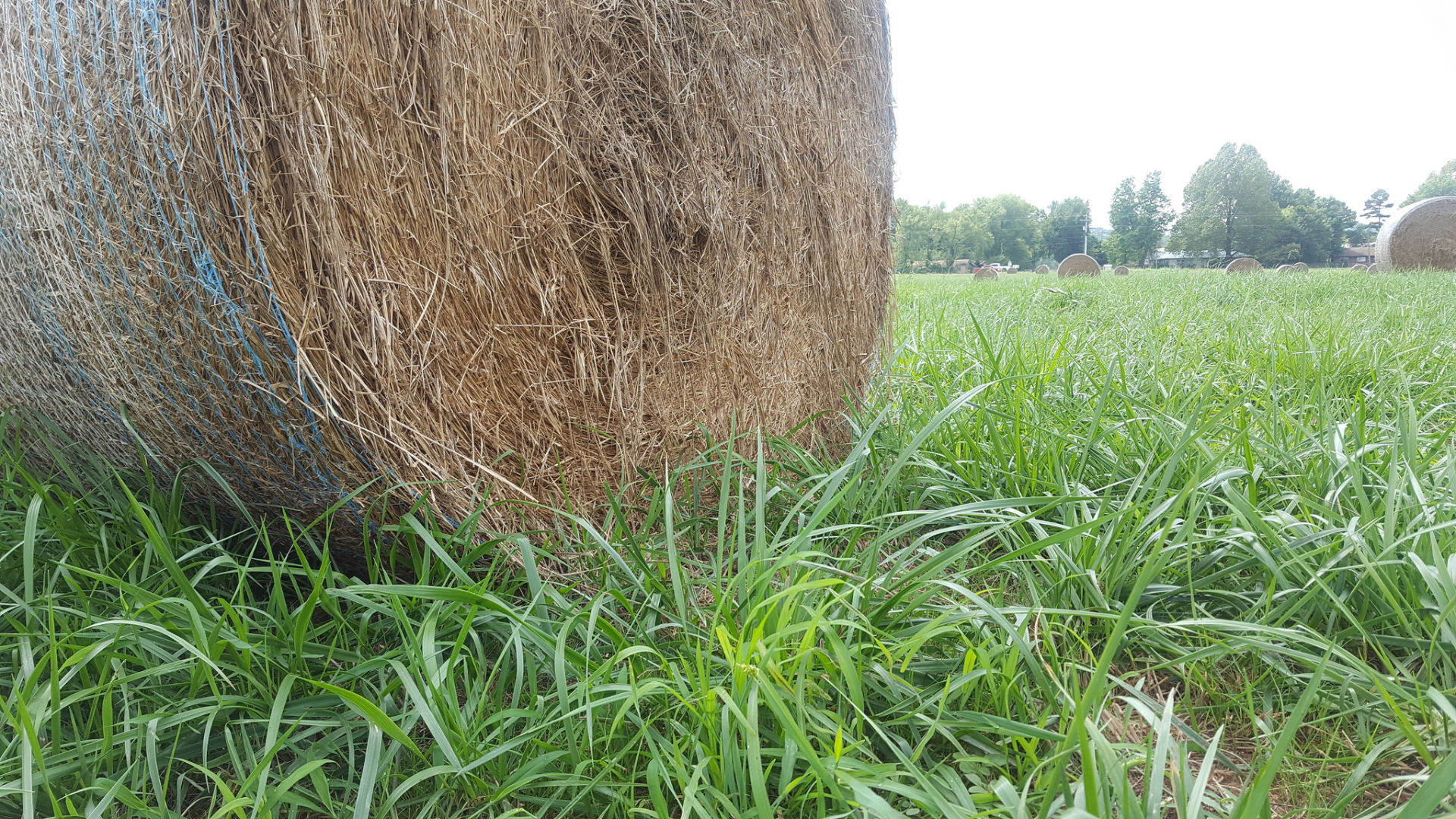Top 5 Takeaways
- Wet bales are at risk for combustion; store appropriately and check temperatures. Anything above 170°F is high risk.
- Mold may produce mycotoxins, so roll out and let animals select good portions of moldy bales. Make sure other clean feed is available.
- Protect yourself from respiratory issues while working with moldy bales by using a dust mask.
- Hay testing is especially important when hay quality and safety are concerns.
- Wet bales continue to lose quality over the course of the year, so sample a few weeks before you plan to feed for accurate results.
Cattle producers in some parts of the country had to adjust quickly from too dry to too wet this year.
Hay that gets rained on while it’s still in the windrow will lose nutritional value, but if it’s put up too wet, has been sitting in water, or is otherwise saturated, it needs special consideration.
Hay Combustion
Moisture can lead to combustion. Hay should be put up at 20 percent moisture or less. Above this, microbes begin to break down plant matter, and mold growth occurs. This breaking down of the hay produces heat and leads to the danger of combustion.
If weather conditions don’t allow the hay to dry and cure, baleage or other high-moisture baling techniques can be an option. These use a plastic wrap or tube to exclude oxygen and create an anaerobic fermentation environment that limits decomposition and heat production.
If you end up with “hot” hay that’s too wet in the bale, store that away from other bales, and outside to limit the risk of a fire spreading. Some insurance policies have limits on how many bales they will cover per stack, so now is a good time to check into that.
Periodically check temperatures on these bales by using a long-stem compost thermometer or driving a metal pipe into the bale and lowering in a non-mercury thermometer. Any bales at 170°F or higher should be closely monitored. At this point, temperatures will most likely continue to rise.
Bale combustion can begin at temperatures as low as 190°F, especially in coarse hays like sorghum-sudangrass hybrids. Increased oxygen flow in these bales due to the coarse stems means higher risk. Moving hot bales can also open them up and increase oxygen flow, increasing the risk of combustion.
Moldy Hay
Even if they don’t catch fire, wet bales will continue to decrease in quality. Mold growth uses plant tissues as an energy and protein source, decreasing quality. Hot temperatures denature cell structures, which changes proteins and carbohydrates, making them less useful for the animal when digested. In some cases when we have anaerobic conditions and heat, hay may “caramelize,” becoming golden colored and sweet smelling. While highly palatable, this heat-fermented hay is also lower in quality due to heat damage during the fermentation process.
So, if you have wet hay showing one or more of these signs, what do you do?
Managing Hay Mycotoxins
Mold has the potential to produce mycotoxins which, in high enough levels, could be deadly to animals that ingest it in extreme circumstances. The moderate side effect is reduced intake, a decrease in ruminal function, and overall reduced performance of the animal, leading to economic losses. While this may seem minor, the lowered feed values of forages due to increased rain and extended winters amplify the potential for poor breed-up and decreased calf weights.
The best way to use moldy hay is to spread out the bales and let the animals pick through, with a second source of clean hay for them to select from as well. Mold often reduces palatability and animals will avoid especially bad chunks. Having clean hay available ensures animals aren’t forced to eat anything they don’t choose to. Pregnant animals are more sensitive to mycotoxin poisoning, which can lead to fetal termination, so consider limiting the amount of moldy hay these animals receive. Horses are highly sensitive to mold in hay, with danger of both respiratory and toxin issues. As such, it is best to keep moldy hay away from horses.
Mold can also be a health risk to the producer. Frequently breathing in large amounts of dust and mold can cause respiratory issues such as farmer’s lung. To protect against this, wear a dust mask when working with hay that may have high amounts of mold.
Hay Testing
Hay testing is going to be critical this year. Determining actual, as-fed hay quality is important for meeting animal nutrition needs through the winter. If moldy hay is being ground for a diet, correctly diluting forages to ensure bad hay isn’t being overfed is vital, since these animals don’t have the option for refusal. Mold and mycotoxin tests can be a bit expensive and not all labs offer these tests. Your local Beef Extension Educator would be happy to help with finding a lab and determining a cost-effective sampling strategy.
Until bales cool off and moisture content drops below 20%, the quality of hay will continue to drop through the year. To make sure we are getting an accurate assessment of hay quality, sample by lot (hay harvested from the same field within a 48-hour period) a few weeks before you plan to feed. Early samples can be taken to gauge quality for planning purposes, but since the degradation process in these bales is ongoing, a true reading won’t be understood until right before feeding. This should give an accurate idea of the forage quality while still giving the lab time to get results back to you. Knowing the quality of hay allows for better decision making of how to use low quality forage and prevent underfeeding of animals.


